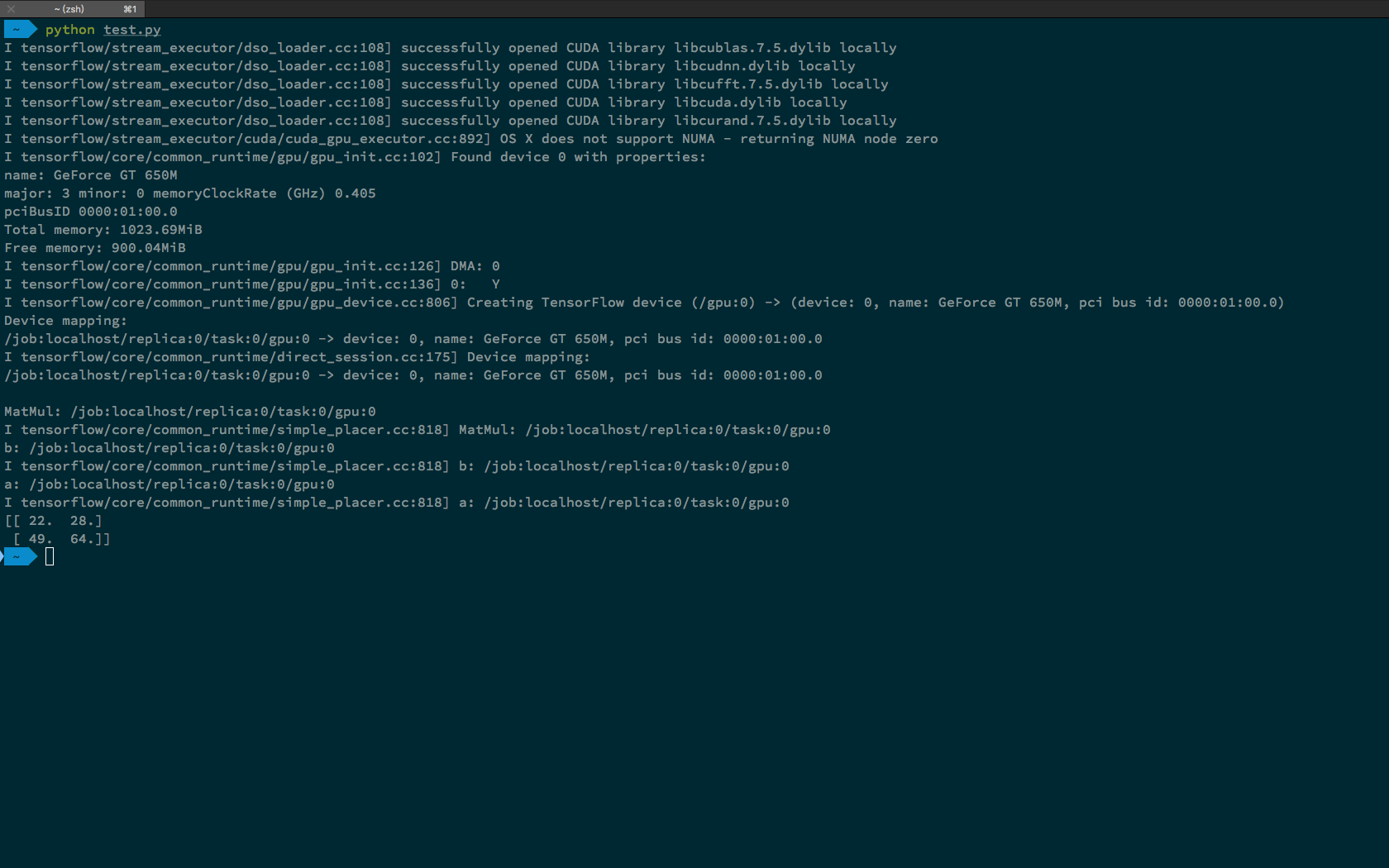什么是TensorFlow
TensorFlow是Google发布的第二代深度学习系统。TensorFlow 顾名思义,tensor就是张量,即类型化的多元数组,flow取自data flow graph(数据流图)。图中的每个节点(node)为数学运算,图的边(edge)是数据流,即前面提到的张量(tensor)。这种结构可以让你很容易地将计算任务分发到不同的设备中。
Tensorflow 支持C,C++,Python。目前 Python 的库最为易用,所以 Python 是我们实践 TensorFlow 的首选。目前TensorFlow(r0.9,2016-7-21)官方有Linux下的CPU、GPU支持,OS X下的CPU支持,还有Android支持。TensorFlow的GPU支持是基于CUDA的,这意味着你的机器必须有N卡才可以启用GPU支持。我的机器是2012中的Macbook Pro,带一块儿NVIDIA GeForce GT 650M。然而官方OS X并不带GPU支持,要实现这个功能需要自己编译。本文就将介绍我编译OS X下带GPU支持的TensorFlow的一些经验。
步骤
这篇文章主要参考了
[https://docs.google.com/document/d/1f0y8t28c\_VltOx4mZDSUCozuAslejT4f\_QlATKX82Uw/edit]
推荐使用Python3
1.检查机器是否有Nvidia的GPU
这一步很简单,在系统报告里就可以看到。不太确定外置的eGPU是否可用,没有测试。
2.编译Tensorflow的pip package
首先安装 Homebrew:
|
|
使用brew安装bazel和swig:
|
|
安装python的six、numpy和wheel:
six
numpy
wheel
安装ipyhton
|
|
如果你使用了Anaconda python,以上两步都可以省略
安装coreutils
|
|
安装 CUDA Toolkit
|
|
将CUDA目录添加到路径中(以bash为例)
|
|
安装CUDA的深度神经网络库(cuDNN)
这步需要先注册Nvidia的Accelerated Computing Developer Program, 注册地址为[https://developer.nvidia.com/accelerated-computing-developer]。注册好之后,我们需要下载cuDNN v5.1 RC (June 16, 2016), for CUDA 7.5(这里因为brew默认安装的是7.5版本的CUDA,所以需要下载对应版本的cuDNN)。下载好之后,解压、并将相应文件转移到cud目录中。
下载Tensorflow源码(v0.90rc0)
|
|
查看你的GPU是否支持CUDA
https://developer.nvidia.com/cuda-gpus
编译
|
|
按照以下选项进行配置:
配置好之后进行编译:
安装编译好的package
|
|
测试
如果以上步骤一切顺利,我们可以进行下一步测试了。
新建一个python文件:
以下为一个求矩阵乘积的程序:
运行:
如果看到以下结果,说明可以正常使用了,enjoy!